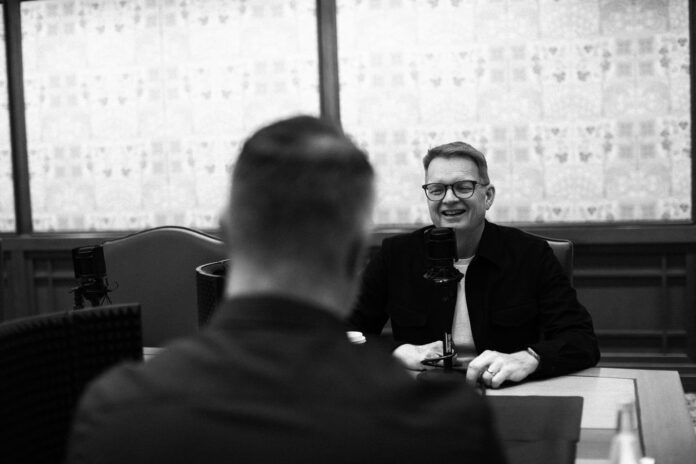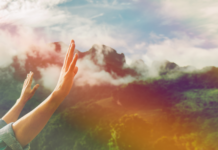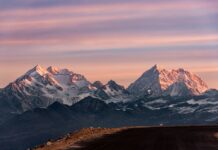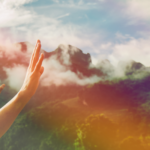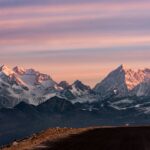If you’ve ever wondered what kind of gear to use for producing high-quality podcasts or videos, this one’s for you.
I’ve been podcasting and shooting video from home (and from studios) for years, and almost every day, leaders keep asking me what gear I use, so I thought I’d put together The Ultimate Podcast Studio Gear Guide.
Recently, my team and I overhauled (and fine-tuned) my setup to be high-quality, reliable, and still manageable for a lean team.
Best yet? I can operate it all easily solo without a crew.
This isn’t about having the flashiest equipment. It’s about getting the best results with the right tools, so you can focus on what matters most: delivering great content and leading well.
Expensive gear doesn’t generate extensive impact online.
You don’t have to spend a lot of money… at all. Expensive gear doesn’t generate extensive impact online.
Quality content does.
They say content is king. I agree—and would say great content is both king and queen.
Gear helps, but there are lots of people with thousands of dollars of gear and no audience.
To give you a better idea of how very little gear goes a long way:
- I hit my first few million page views in blogging with a $75 investment in a WordPress theme (a plug-in that no longer exists).
- I had my first several million downloads in podcasting out of an investment of under $1000 in gear.
- Now, over 30 million downloads into podcasting and 25 million page views into blogging, I don’t spend a ton of money on gear, other than to keep my phone and computers current.
If you have a smartphone or laptop, there are very modest gear upgrades you can make that will make your videos and audio better.
Bottom line? Great gear doesn’t make bad content any better.Great gear doesn’t make bad content better.Share on X
Final note: I am not a tech expert. Some more technically skilled people who give great advice on gear are Sean Cannell and Brady Shearer.
Below is a breakdown of my full setup, plus a simple starter kit if you’re on a budget.
Video gear for podcasting:
Sony Alpha A6400 DSLR with 18–135MM Lens. Crisp autofocus and incredible depth. Whether you’re capturing wide shots or tighter interviews, this is my go-to camera for podcast video.
Sony 20MM F1.8 G Ultra-Wide Prime Lens. This full-frame lens gives that cinematic, shallow-depth-of-field look everyone’s chasing. Great for tight studio spaces.
Elgato Teleprompter. This is a game-changer. Here’s why:
- Voice Sync Mode: Upload your script and let it auto-scroll in real time with your voice.
- Display Mode: Drag your Zoom window right onto the prompter screen so you’re looking directly at your guest and the camera.
- Presenter Mode: Great for live webinars and teaching sessions.
Elgato Stream Deck. Instantly switch between apps, camera angles, and teleprompter modes with the touch of a button. It’s like a control room at your fingertips.
Transform your preaching with my free 10-Step Preaching Cheat Sheet
Audio gear for podcasting:
Shure SM7B Microphone. A classic for a reason. I’ve got one desk-mounted and two extras on hand for guests. Broadcast-quality sound, every time.
Focusrite Scarlett 2i2 (4th Gen). Reliable, portable, sounds fantastic, and connects everything.
Cloudlifter Mic Activator. The secret sauce to getting the best out of your SM7B (or any mic).
Heil PL 2T Microphone Boom Arm. Fully articulating and rock-solid boom arm. No more mic drift mid-recording.
On-Stage Mic Stand. Great for flexibility or a second guest mic. Basic, but it gets the job done.
Audio-Technica ATH-M50x Studio Headphones. These give you accurate sound monitoring without being overly-flashy.
Sonos Era 100 Studio Speakers. Clean, balanced sound for playback and editing.
Lighting for your home studio:
Amaran P60X Bi-Color LED Soft Panel. High-quality, adjustable light with soft diffusion.
Elgato Key Light Air. I love how small these lights are.
Philips Hue Ceiling Lights (x5 Pot Lights). Smart, adjustable, and controlled right from your phone. These are key to set the mood, color, and hue in just a few seconds.
Philips Hue Floor Discs. Great for ambient backlighting or adding visual depth to your video setup.
Computer & desk gear:
2024 iMac M4 – 10 Core, 32GB RAM, 2TB Storage. It handles everything like a champ.
2021 M1 MacBook Pro – 32GB RAM, 4 TB Storage. I use this for portable work or when I want a second screen. A few years later, it’s still a beast.
Besign Laptop Stand. Simple and keeps the laptop at eye level.
CalDigit TS4 Thunderbolt Dock. The unsung hero of the studio, because let’s be honest, you always need more ports.
Brother Label Maker. Keeping your studio organized is wildly underrated.
Velcro Cut-to-Size Roll. Hide your cables to keep a clean workspace.
Bays Tree Custom Charging Deck. One place to charge everything—AirPods, phone, watch, you name it.
Smiirl Counters. Just for fun… and a little dopamine. These are a great visual to track your milestones.
Portable podcast gear for your iPhone:
DJI Mic Mini. Crystal-clear wireless audio when you’re recording on the go.
DJI Gimbal. Keep your iPhone video smooth, even if you’re walking, moving, or podcasting on the road.
Furniture & other studio gear:
Structube Kinsey Leather Love Seat (Caramel). A “trendy classic” that makes your studio feel like a space you want to spend more time in.
Herman Miller Eames Chair (Tall).
Herman Miller Aeron Chair. You’ll sit in it a lot, so you might as well be comfortable.
Standing Desk: Pittsburgh Crank Desk from Pottery Barn (Custom Walnut Top). Sadly discontinued, but still worth checking out if you want a reference point for the standing desk that I use.
Paint: Benjamin Moore Topsoil CC-692. This is the color I chose for a deep, warm, and cohesive feel on video.
Home studio gear to get you started for under $100:
So what do you need to add to your smartphone or laptop to get a decent quality video? Not much.
Here is some video, audio, and other gear to get you started for $100 or less.
If you can only afford one piece, buy the mic and have someone hold your phone or prop it up on something. Most people will tell you good audio is more important than perfect lighting or camera angle.
Audio & video
- Shure Lapel Mic. While I have purchased a ton of mics over the years, this is the one I use 99% of the time for simple shots.
- Targus Grypton Tripod. It’s super cheap, versatile, and wraps around objects. Not perfect but hey, it works. If you want something more robust, the Joby GorillaPod is a higher-end alternative.
- Logitech C920 HD Pro Webcam. I bought this webcam as the first step above the built-in camera on an older iMac, but don’t use it anymore. (The Brio Logitech 4K Webcam is far better for color and crispness and it’s less than $200).
Lighting
- Selfie-circle ring light. Often natural room light is enough, but if you need a light or are recording at night, a simple circle ring light works just fine.
- Elgato Key Light Air for something a bit more expensive (this one is over $100.)
Experimenting with a modest upgrade like these can make a meaningful difference.
Don’t break the bank if you don’t have it.
You can literally hit thousand (and millions) of views, downloads, or visitors withouth spending much on your setup.
I hope this helps!

